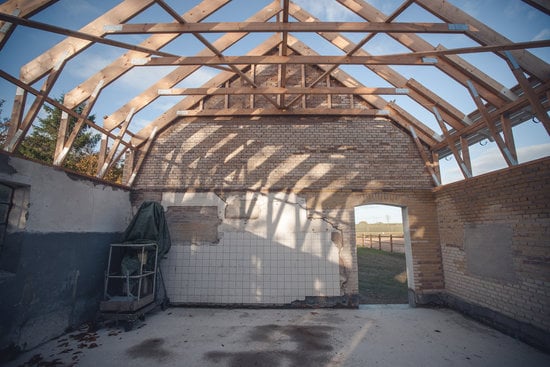Are capital improvements on your home taxable? When it comes to maintaining and improving your property, it’s essential to understand the tax implications of these investments. In this article, we will explore the definition of capital improvements, provide examples, and discuss whether they are subject to taxes.
Capital improvements refer to significant enhancements made to a property that are intended to increase its value or prolong its useful life. These can include renovations, additions, major repairs, and structural modifications. Understanding what qualifies as a capital improvement is crucial for homeowners, as it can affect their tax obligations and potential deductions.
Determining whether an expense falls under repairs or improvements can be complex. It’s important for homeowners to grasp the difference between the two for tax purposes.
Additionally, we will delve into the impact that capital improvements can have on the overall value of a home and how this affects tax considerations. Stay tuned as we unravel everything you need to know about taxable vs. non-taxable capital improvements, reporting requirements for taxes, potential deductions, and expert advice on navigating these issues.
Determining the Difference Between Repairs and Improvements
When it comes to maintaining your home, it’s important to understand the difference between repairs and improvements, especially when it comes to tax implications. While both repairs and improvements involve fixing or enhancing a property, they are treated differently in terms of taxation.
Repairs are considered to be any work that is necessary to keep your property in good condition. These can include fixing a leaking roof, replacing broken windows, or repairing plumbing issues. On the other hand, improvements refer to any work that adds value to your property or prolongs its useful life. Examples of improvements are adding a new room, renovating a kitchen or bathroom, or installing a new heating system.
To help you determine whether a project qualifies as a repair or an improvement for tax purposes, here are some guidelines:
- Repairs generally restore something to its original condition.
- Improvements usually increase the value of your home or prolong its life.
- If the project is more extensive and substantial, it is likely considered an improvement.
Understanding the distinction between repairs and improvements will not only help you make informed decisions about your home maintenance but also ensure that you accurately report these expenses on your taxes. It’s important to consult with a tax professional if you are unsure about how any particular project may be categorized for tax purposes.
The Impact of Capital Improvements on Home Value
Capital improvements on your home can have a significant impact on the overall value of your property. When you make upgrades or enhancements to your home, you are not only improving the livability and functionality of the space, but you are also increasing its market value. Here are some examples of how capital improvements can positively impact the value of your home:
- Remodeling the kitchen or bathrooms
- Adding a deck, patio, or landscaping
- Installing energy-efficient windows or solar panels
- Renovating the basement or attic for additional living space
These improvements can attract potential buyers and increase the resale value of your home. Additionally, they can also contribute to overall neighborhood property values.
It is important to note that not all home improvements are considered taxable when it comes to determining the fair market value of your property. In fact, many capital improvements can actually help lower your tax liability when it comes time to report them on your taxes. Understanding which improvements are taxable and which ones are not can help homeowners maximize their tax benefits while enjoying a more valuable living space.
When considering making capital improvements to your home, it’s essential to keep detailed records of all expenses related to these enhancements. Whether it’s through receipts, invoices, or contracts with contractors and suppliers, having a comprehensive record will be crucial for reporting these improvements come tax season. Keeping track of these expenses will also be helpful in maximizing any potential tax breaks and deductions for these capital improvements.
Taxable vs Non-Taxable Capital Improvements
When it comes to making capital improvements on your home, one of the important considerations is whether these improvements are taxable. The answer to this question depends on the nature of the improvement and how it is categorized for tax purposes.
Taxable capital improvements typically refer to those that add value to your property, such as adding a swimming pool, installing a new roof, or building an addition to your home. These types of improvements are considered taxable because they increase the overall value of your property.
On the other hand, non-taxable capital improvements are those that are considered necessary for the upkeep and maintenance of your home, such as repairing a broken window, fixing a leaky roof, or replacing a malfunctioning HVAC system. These types of improvements may not necessarily add value to your property but are essential for its functionality and habitability.
It’s important for homeowners to understand the distinction between taxable and non-taxable capital improvements in order to accurately report them on their taxes. Failing to do so could result in inaccurate tax filings and potential penalties from the IRS. Consulting with a tax professional can provide clarity on which capital improvements are considered taxable and non-taxable based on individual circumstances.
Reporting Capital Improvements on Your Taxes
When it comes to reporting capital improvements on your taxes, it’s important to understand the implications and potential benefits. Capital improvements are not directly taxable in the year they are made, but they can have an impact on your taxes when you sell your home. These improvements can increase your basis in the property, which ultimately reduces the amount of taxable gain when you sell.
To report capital improvements on your taxes, you will need to keep thorough records of the costs and dates of the improvements. This is crucial for calculating your adjusted basis when you sell your home. The adjusted basis is used to determine the gain or loss on the sale of the property.
It’s important to differentiate between repairs and improvements when reporting them on your taxes. While repairs are generally not tax-deductible, some home improvements may qualify for tax breaks or deductions. Consulting a tax professional can help ensure that you are taking advantage of any available tax benefits for your capital improvements.
| Aspect | Importance |
|---|---|
| Recordkeeping | Crucial for calculating adjusted basis |
| Differentiating Repairs vs Improvements | Impacts tax deductibility |
| Tax Professional Consultation | Maximizing available tax benefits |
Tax Breaks and Deductions for Capital Improvements
When it comes to capital improvements on your home, there may be potential tax breaks and deductions available to help offset some of the costs. These tax benefits can provide homeowners with a way to save money while simultaneously improving their property. Understanding what tax breaks and deductions are available for capital improvements can help homeowners make informed decisions about their home improvement projects.
Understanding Tax Breaks for Capital Improvements
Tax breaks for capital improvements are designed to incentivize homeowners to invest in their properties. One common tax break is the Residential Energy Efficient Property Credit, which provides a credit for expenses related to qualifying energy-efficient home improvements. This credit can apply to items such as solar panels, solar water heaters, geothermal heat pumps, wind turbines, and fuel cells.
Deductions for Capital Improvements
In addition to tax credits, homeowners may also be eligible for deductions on certain capital improvements. For example, if you use a portion of your home as a home office and make improvements to that specific area, you may be able to deduct a percentage of those improvement costs as business expenses. It’s important to keep detailed records and consult with a tax professional when claiming these deductions.
Consulting With a Tax Professional
Navigating the complexities of tax breaks and deductions for capital improvements can be challenging. Consulting with a qualified tax professional can provide homeowners with personalized guidance regarding their specific situation. A tax professional can help ensure that you are taking advantage of all available tax benefits while also staying in compliance with tax laws and regulations.
By understanding the potential tax breaks and deductions available for capital improvements on your home, you can make informed decisions about how to improve your property while taking advantage of valuable financial benefits. Be sure to keep thorough documentation of all improvement expenses and consult with a tax professional for personalized advice on maximizing your tax savings.
How to Keep Track of Capital Improvements for Tax Purposes
When it comes to keeping track of capital improvements for tax purposes, it is important to have a system in place to document and categorize all relevant expenses. By doing so, you can ensure that you are accurately reporting these improvements on your taxes and taking advantage of any potential tax breaks or deductions.
One way to keep track of capital improvements is to create a dedicated folder or file where you can store all relevant receipts, invoices, and other documentation related to the improvement projects. This will make it easier to gather the necessary information when it comes time to report these expenses on your taxes.
Additionally, it can be helpful to create a spreadsheet or use accounting software to track and categorize all capital improvement expenses. This can include details such as the date of the expense, the nature of the improvement, the cost, and any other pertinent information. By organizing this data in a structured manner, you can more easily provide accurate information when filing your taxes.
Furthermore, it is important to keep records of any permits or approvals obtained for the capital improvements. This documentation may be necessary when reporting these expenses on your taxes or if you are ever audited by the IRS. Having a well-organized system for tracking capital improvements will not only help you comply with tax regulations but also provide peace of mind knowing that your records are in order.
| Expense Description | Date | Cost |
|---|---|---|
| Kitchen Remodel | 03/15/2021 | $15,000 |
| Bathroom Addition | 06/20/2021 | $10,000 |
Consult a Tax Professional for Specific Advice
When it comes to the tax implications of capital improvements on your home, it’s always a good idea to seek specific advice from a qualified tax professional. While there are general guidelines and rules regarding taxable and non-taxable capital improvements, every homeowner’s situation is unique and may require individualized guidance.
Benefits of Seeking Professional Advice
Consulting with a tax professional can provide you with personalized advice based on your specific circumstances. They can help you determine which capital improvements may be taxable and which ones may qualify for tax breaks or deductions. Additionally, they can assist you in ensuring that you are accurately reporting your capital improvements on your taxes to avoid any potential issues with the IRS.
Understanding Complex Tax Laws
Tax laws and regulations can be complex, especially when it comes to capital improvements on a home. A tax professional can help break down these laws in a way that is easy to understand, providing you with clarity and peace of mind when it comes to your tax obligations. They can also keep you informed about any changes in tax laws that may affect the treatment of capital improvements.
Maximizing Tax Benefits
A tax professional can help you maximize any potential tax benefits associated with capital improvements on your home. They can identify opportunities for deductions or credits that you may not be aware of, ultimately helping you save money on your taxes. By working with a knowledgeable professional, you can make sure that you are taking full advantage of any available tax benefits related to your home improvements.
Conclusion
In conclusion, it is essential to understand the tax implications of capital improvements on your home. While the cost of repairs and maintenance are generally not tax-deductible, capital improvements can have tax implications. Determining whether a home expense is considered a capital improvement or a repair can be complex, but it is crucial for homeowners to accurately report these expenses on their taxes.
It is important to keep track of all capital improvements made to your home and maintain thorough records for tax purposes. This includes saving receipts, invoices, and any other documentation related to the improvement projects. By doing so, homeowners can ensure they accurately report their capital improvements on their taxes and potentially qualify for tax breaks or deductions.
For specific advice regarding the tax implications of capital improvements on your home, it is highly recommended to consult a qualified tax professional. They can provide personalized guidance based on your individual circumstances. Overall, understanding the difference between taxable and non-taxable capital improvements and properly reporting these expenses will help homeowners navigate the complexities of home-related tax deductions and ensure compliance with IRS regulations.
Frequently Asked Questions
What Does the IRS Consider Capital Improvements on Home?
The IRS considers capital improvements on a home to be enhancements that add value to the property, prolong its useful life, or adapt it to new uses. This can include projects like adding a room, replacing the roof, or installing a new heating system.
What Happens if You Don T Have Receipts for Capital Improvements?
If you don’t have receipts for capital improvements, it can make it challenging to prove the cost of the work done. However, there are other ways to substantiate your expenses such as bank records, credit card statements, and contractor agreements.
What Is the Difference Between Repairs and Capital Improvements?
The main difference between repairs and capital improvements is that repairs are meant to maintain a home’s existing condition, while capital improvements are intended to enhance its value or extend its life.
Repairs are considered routine maintenance and are not usually deductible for tax purposes, while capital improvements can be added to the cost basis of the home for tax purposes.

I’m thrilled to have you here as a part of the Remodeling Top community. This is where my journey as an architect and remodeling enthusiast intersects with your passion for transforming houses into dream homes.





